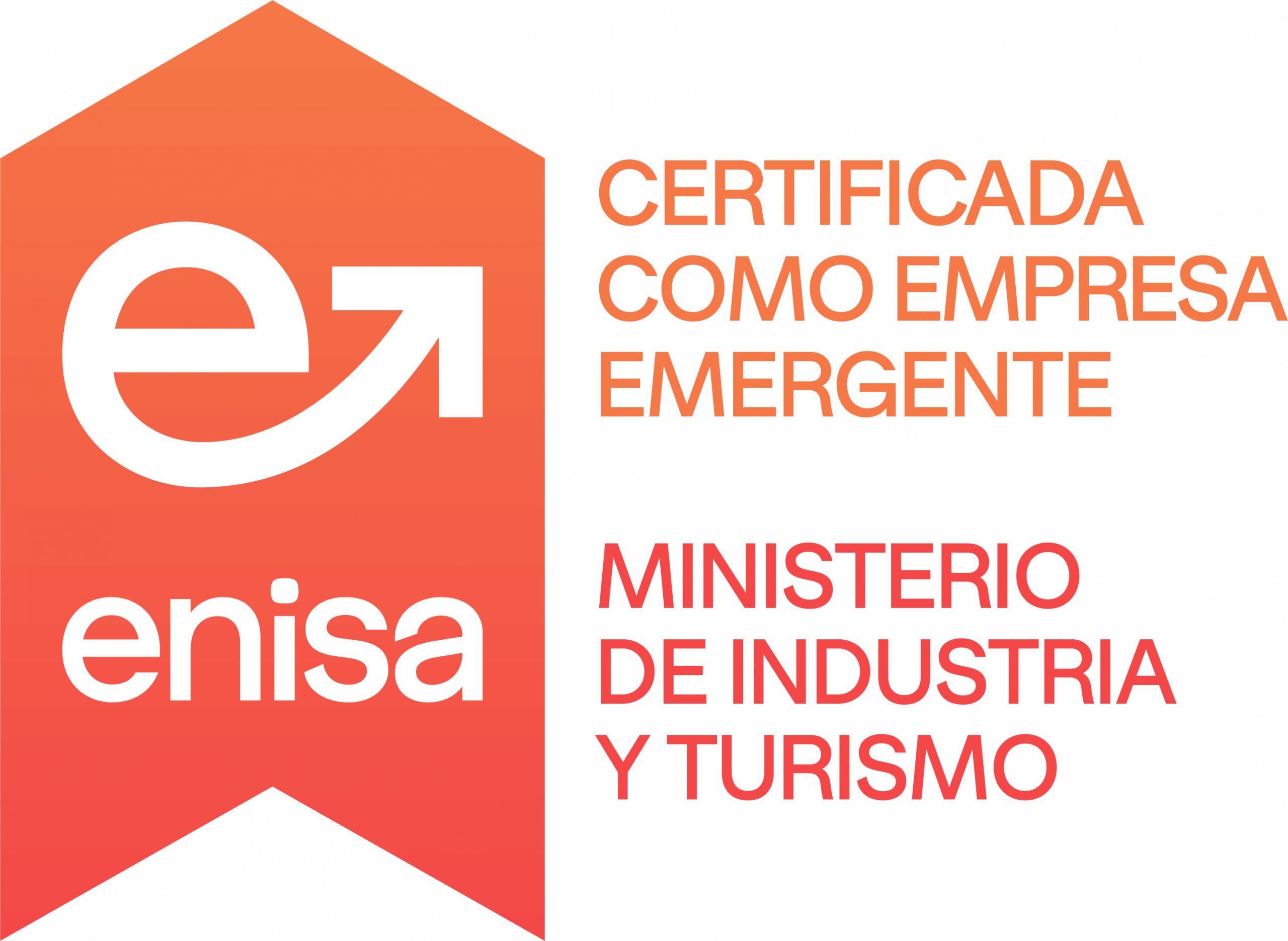How to turn a passion into a sustainable livelihood?" is one of the questions that people involved in content creation ask themselves daily.
And this article is dedicated to two of the most commonly used strategies for monetizing your content: sponsorship and donations.
Undoubtedly, these two monetization avenues offer unique opportunities for creators to turn their passion into a profitable and lasting career.
To do this, we will break down the key differences between sponsorships and donations and provide you with practical tips on securing sponsors and attracting donors.
If you've ever wondered how you can maintain and grow your online presence while generating income, you've come to the right place.
Let's start exploring the opportunities that sponsorships and donations have in store for you as a content creator!
What are the differences between sponsorships and donations?
Before diving into strategies to make money through sponsorships and donations, it's crucial to understand the fundamental differences between these two forms of financial support.
Both have the potential to boost your income as a content creator, but their dynamics and objectives vary significantly.
Sponsorships:
- Commercial Transaction: Sponsorships are commercial agreements in which a company or brand funds your content in exchange for promotion or association. This implies an expected return on investment from the sponsor.
- Promotional Objective: Sponsors aim to promote their products, services, or brand through your audience. This can include mentions in your content, ads, or even collaboration on specific projects.
- Long-term -term agreements, providing financial stability and lasting relationships.
- Negotiation of Terms: In sponsorships, it's common to negotiate specific terms such as the scope of promotion, the duration of the agreement, and compensation.
Donations
- Voluntary Support: Donations are voluntary financial contributions from your followers or audience without the expectation of direct commercial reciprocity.
- Altruistic Motivation: People make donations for various reasons, including their admiration for your work, the value they derive from your content, or a desire to support your career.
- Flexibility: Donations are often more flexible in terms of use. You can use the funds to improve your equipment, create higher-quality content, or finance other projects.
- No Commercial Commitments Required: Unlike sponsorships, donations do not involve promoting external products or services. This allows you to maintain greater control over your content.
In summary, sponsorships are commercial agreements involving promotion and collaboration with brands, while donations are voluntary contributions from your audience, motivated by support for your work.
Both avenues have their place in content monetization, and the choice between them will depend on your goals and values as a creator.
Once you've decided on the strategy that best suits your content, it will be time to make the most of them.

Monetizing content with sponsors
Sponsorships are an effective way to monetize your content and generate income as a creator.
If you have a solid audience and an authentic voice in your niche, brands may be interested in partnering with you to promote their products or services.
Here's a step-by-step guide you can follow to monetize your audience with sponsors
1. Build a Solid Audience:
- Before attracting sponsors, it's essential to have a base of engaged followers. Ofrece contenido de calidad, interactúa con tu audiencia y grow a loyal community..
2. Define Your Niche and Value Proposition:
- Understand your niche and what makes you unique as a creator. Brands seek to collaborate with those who have a relevant audience for their products or services.
3. Create a Media Kit:
- Develop a media kit that includes audience statistics, demographics, examples of previous content, and your sponsorship rates.
4. Identify Relevant Brands:
- Research and reach out to brands that align with your content and audience. Customize your proposals to demonstrate how you can benefit the brand.
5. Negotiate and Agree on Terms:
- When a brand shows interest, negotiate the terms of the agreement. Set clear expectations regarding the scope of promotion and compensation.
6. Transparency with Your Audience:
- Maintaining your audience's trust is essential. Make it clear when you are doing a sponsored promotion and ensure that your content remains authentic.
7. Measure Results:
- Evaluate the impact of collaborations on your audience and the brand. Metrics such as reach, engagement, and conversions are key.
8. Build Long-term Relationships:
- Whenever possible, seek ongoing relationships with brands. This can lead to stable income and more meaningful collaborations over time.
It's clear that monetizing with sponsors requires time and effort, but it can be a significant source of income for content creators.
The key is to find a balance between promoting brands authentically and maintaining your audience's trust.
With a solid strategy and effective brand relationships, you can achieve success in monetizing your content.
However, there are several different types of content sponsors.
Would you like to know how to find the right sponsor? We explain it in the next section.
Sponsors for content creators
The sponsors is an essential step in successfully monetizing your content as a creator. Here, we provide key information about the types of sponsors and how to find them:
1. Types of sponsors:
- Brands and Companies: These are the most common sponsors. Brands may be interested in partnering with you to promote their products or services through your content.
- Non-profit Organizations: If your content is related to social or environmental causes, you can seek sponsorship from non-profit organizations that share your values.
- Individual Sponsors: Some individuals or entrepreneurs may be willing to sponsor you if they believe in your content and vision.
2. Where to find sponsors:
- Sponsorship Networks: Platforms like GrapeVine, AspireIQ, and Famebit connect creators with brands seeking collaborations.
- Active Search: Research brands and organizations that align with your niche and focus. Contact them directly through email or social media.
- Events and Conferences: Attending industry events and conferences gives you the opportunity to network with brand representatives and organizations.
3. Prepare an effective media kit:
- Although it may sound redundant, having a well-crafted media kit is essential. It should include audience statistics, demographics, examples of content, and sponsorship rates.
4. Personalization and value proposition:
- Customize your proposals for each potential sponsor. Highlight how you can help the brand achieve its goals and why they should choose you.
5. Authentic collaborations:
- Look for sponsors whose products or values align with your content. Authentic collaborations yield better results and maintain your audience's trust.
6. Negotiation and clear terms:
- When negotiating with sponsors, establish clear terms, including the scope of promotion, duration of the agreement, and compensation.
7. Compliance and measurement:
- Fulfill the commitments of the sponsorship agreement and measure results. Provide performance reports to sponsors to demonstrate the value of the collaboration.
8. Long-term relationships:
- Whenever possible, seek long-term relationships with sponsors. This can provide financial stability and stronger collaborations over time.
Finding sponsors for your content requires perseverance and a strategic approach.
By building effective relationships with brands and organizations that share your values, you can harness the power of sponsorships to monetize your content and grow your career as a content creator.
Now that you know how to monetize through sponsors, let's explore how you can do it through donations.

Generating income through donations
Donations offer content creators a direct and flexible source of income driven by the support of their audience.
The keys to generating income through donations are as follows:
1. Choose the right platform:
- To receive donations, it's essential to select the right platform. Popular platforms like Patreon, Ko-fi, and Buy Me a Coffee offer tools for followers to make contributions. NOTE: Very soon, you'll also be able to do it using Mumbler's donation feature.
2. Communicate the value of your work:
- Ensure that your audience understands the value you bring to their lives through your content. Explain how donations can help you maintain and improve the quality of your work.
3. Offer exclusive rewards:
- Consider offering exclusive rewards to your donors, such as additional content, early access, or even exclusive Q&A sessions. This can incentivize donations.
4. Set clear goals:
- Define donation goals for specific projects or improvements. When the audience sees a clear purpose for their contributions, they are more likely to get involved.
6. Continuous promotion:
- Regularly promote the donation option in your content. This can include subtle reminders at the end of your videos, social media posts, or links on your website.
6. Thank your donors:
- Publicly acknowledge and thank your donors. You can do this in your videos, on social media, or even on your website. Recognition can encourage others to contribute.
7. Be transparent:
- Show how you plan to use donations to improve your content or support specific projects. Transparency builds trust between you and your audience.
8. Celebrate milestones and achievements:
- When you reach donation goals or significant milestones, share them with your audience and celebrate together. This reinforces the community and can stimulate more support.
9. Encourage interaction:
- Encourage active participation from your audience. Respond to comments, engage on social media, and create a committed community.
10. Diversify your income sources:
- Donations can be an important part of your income, but consider complementing them with other monetization strategies such as sponsorships and product sales.
This type of strategy can become a stable and direct source of income for content creators.
By building strong relationships with your audience and demonstrating how much you value their support, you can make donations an integral part of your business model.
Don't know how to attract donors to your cause? We'll share some strategies applied by other creators.
How to Attract Donors to Your Cause
Attracting donors to your content or cause requires a strategic approach and a genuine connection with your audience.
Here are the most effective strategies:
1. Clear communication of your cause:
- Explain concisely and convincingly why your content or project deserves support. Clearly define your cause and its impact on your audience's lives.
2. Tell Your Story:
- Personal and emotional stories can deeply connect with the audience.Share your experiences, challenges, and triumphs related to your content.
3. Provide Quality Content:
- The foundation for attracting donors is to provide high-quality and relevant content. When your audience values your work, they are more likely to support you.
4. Highlight the Benefit to the Audience:
- Explain how donations benefit the audience. They can lead to improvements in content quality, access to exclusive content, or the ability to keep content free.
5. Foster Interaction:
- Create opportunities for your audience to participate actively. This can include surveys, Q&A sessions, or even live events where donors have the chance to interact with you.
6. Offer Incentives and Rewards:
- Encourage donations by offering exclusive rewards, such as additional content, early access, or customized products.
7. Be grateful and acknowledge your donors:
- Recognize your donors publicly and express your gratitude. You can do this in your videos, on social media, or even on your website. Gratitude strengthens the relationship with your audience.
8. Show Transparency:
- Be transparent about how you will use the donations. Trust is essential to maintain the support of your donors.
9. Continuous Promotion:
- Regularly promote the donation option in your content. Ensure that your audience is aware of the opportunity to contribute.
10. Share Success Stories:
- Highlight success stories and projects that have benefited from donations. This can inspire others to contribute to your cause.
By following these strategies, you can increase your chances of attracting donors and creating a committed community that values and supports your work.
So, which of the two strategies do you prefer?
Monetizing your content through sponsorships and donations is an exciting opportunity for creators.
However, knowing which of the two strategies aligns better with your content requires a detailed analysis.
Here are the keys that can help you make that decision:
1. Understand the Differences Between Sponsorships and Donations: Sponsorships and donations are two different ways to receive financial support.Sponsorships involve collaborations with brands, while donations come directly from your audience.
2. Personalization and Authenticity: Personalization and authenticity are key in seeking sponsors and donors. Highlight what makes you unique and how you can benefit those who support you.
3. Diversification of Income Sources: To maintain financial stability, consider diversifying your income sources. In addition to sponsorships and donations, explore options like product sales, memberships, and advertising.
4. Effective Communication: Clearly communicate the value you provide to your audience and how donations and sponsorships contribute to keeping your content accessible and of high quality.
5. Strong Relationships: Building strong relationships with your audience and sponsors is crucial. Trust and transparency are key to long-term success.
6. Persistence and Adaptation: Seeking sponsors and donations can take time and effort. Persistence and adaptation as you grow are essential to achieving your goals.
Remember that every content creator has their own unique journey and challenges.
What works for one may not work the same way for another. The most important thing is to maintain your passion for your content and your audience as you explore monetization opportunities.
As you embark on your monetization journey, keep an open and willing-to-learn mindset.
Experiment with different strategies and adjust your approach based on what works best for you and your audience.
Tell us: Have you monetized your content with any of these strategies? Which one do you prefer?
About the author
Content Manager at Mumbler.
Podcaster and content creator.
Passionate about communication and a fan of the WordPress community.
I talk about movies and series on Babel Infinito.
I talk about podcasting on Todo por Un Podcast.









¡Gran artículo sobre monetización a través de patrocinios y donaciones! Tus ideas ofrecen una guía valiosa para aprovechar el apoyo. Para más estrategias de recaudación, explora nuestra guía sobre Cómo iniciar una campaña de donación.